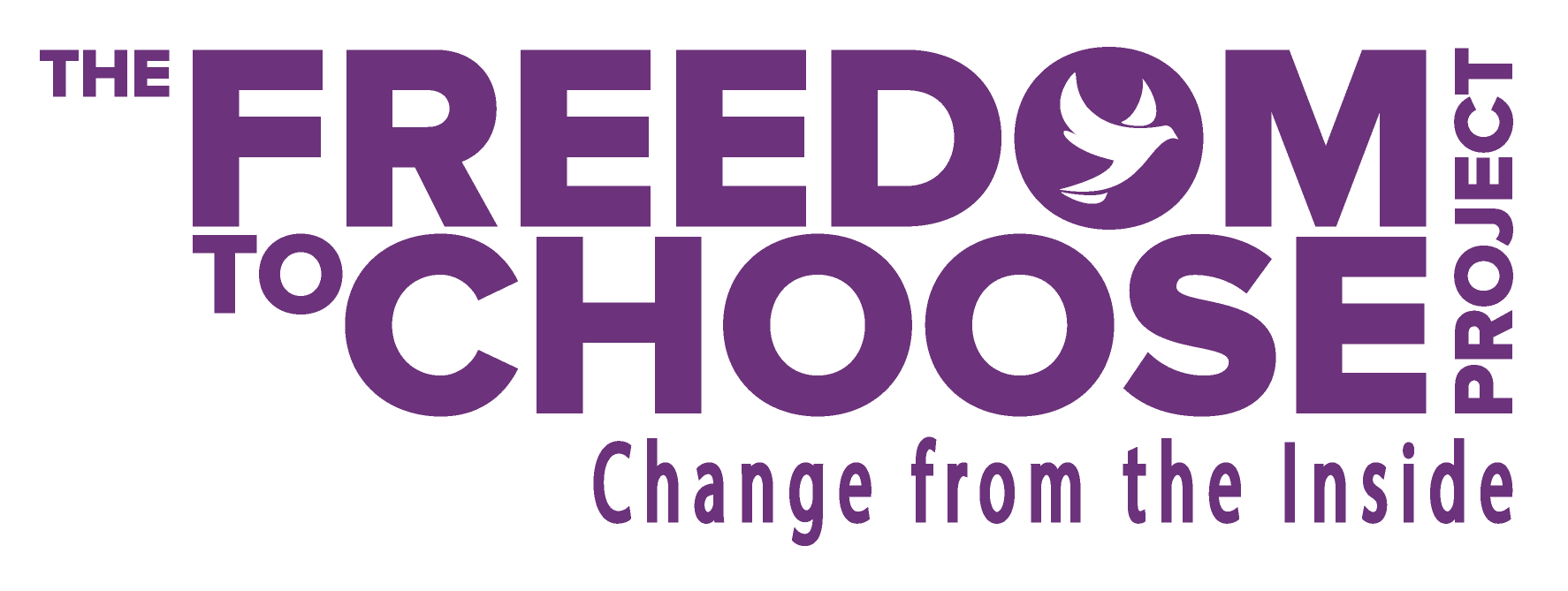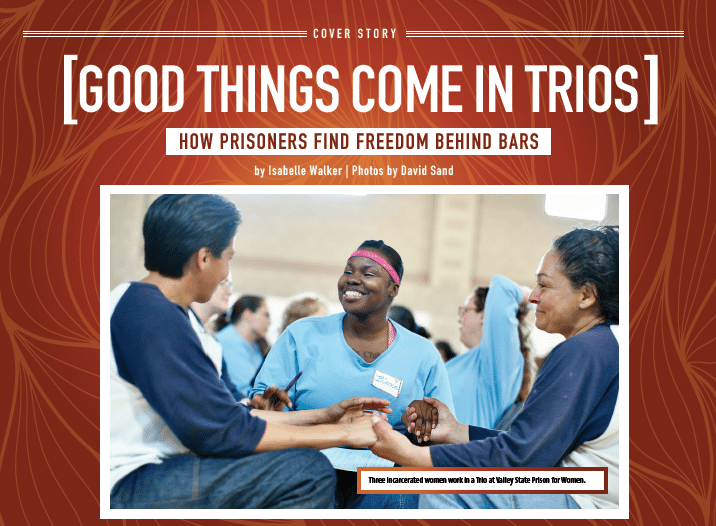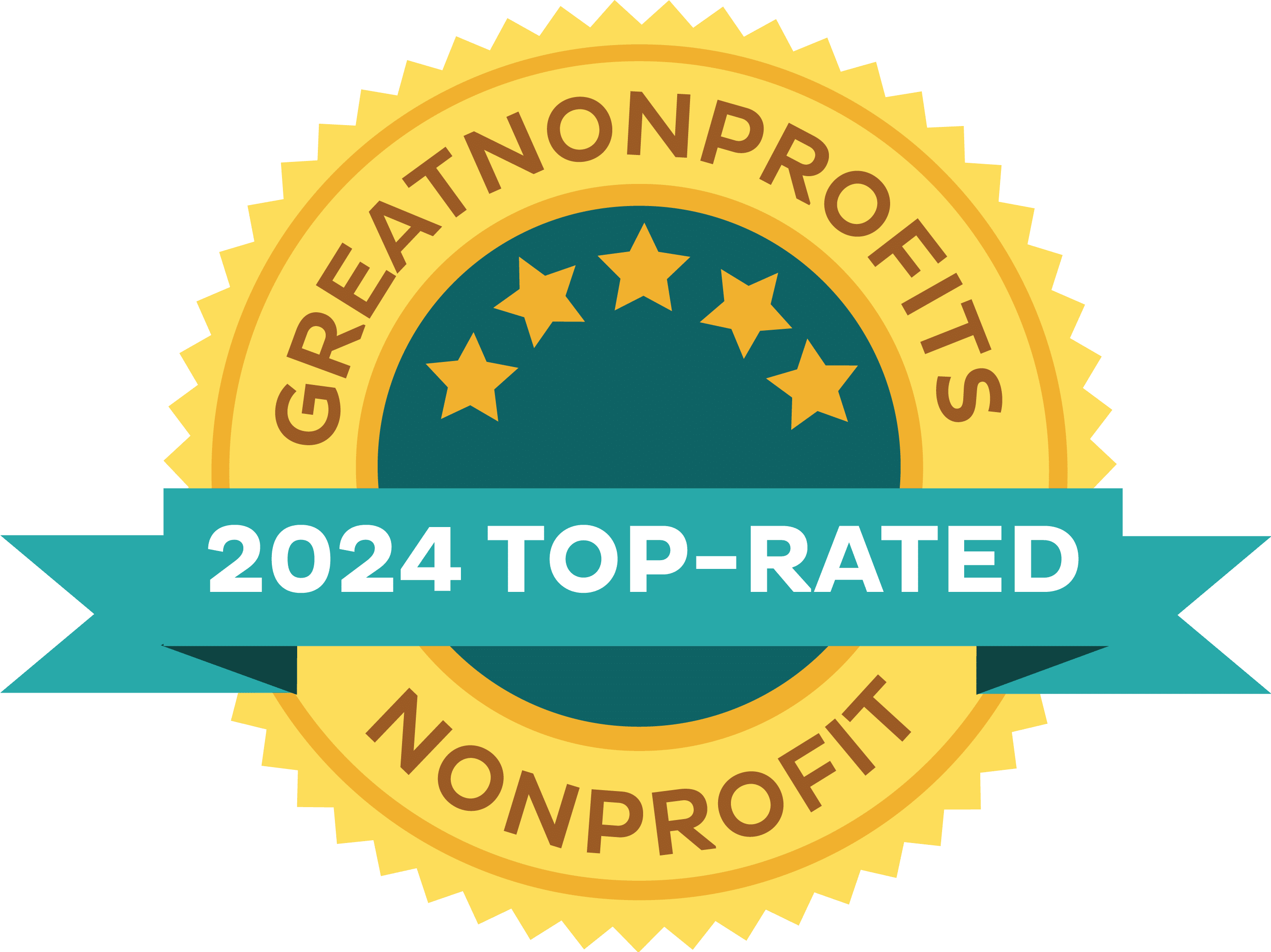How Prisoners Find Freedom Behind Bars
Two Santa Barbara Psychologists Help Heal Traumatic Wounds
By Isabelle Walker | June 27, 2024
(This article was originally published as the cover story by “The Independent” newspaper in Santa Barbara, California)
Rhonda Leland remembers the moment she knew for sure she’d changed. It was 2006, 11 years into her life sentence at Valley State Prison for Women, where respect comes on the giving side of a bare-knuckle punch.
Like many at that facility, Leland had issues with anger. Meaning, she had plenty of it. But she’d been working hard to let it go, attending workshops on topics such as taking responsibility for one’s feelings and releasing judgements. The workshops were so helpful that Leland hadn’t missed one since they began. She thought she was growing but wasn’t positive. Then, one night, someone provoked her and, though pissed as hell, she walked away without so much as a parting shot.
“One of my friends was like, ‘I can’t believe you just did that.’ And I said, ‘Me either.’ I was so proud of myself because I didn’t do anything. And in prison, you’ve got to fight to get respect,” Leland recalled.
Finally, it was her own respect she was earning.
You’ve Got Mail
The workshops that were so instrumental in Leland’s growth were created by a Santa Barbara husband-and-wife team of psychologists, David Paul and Bonnie Paul. The story of how their program evolved and the ameliorative effect it’s having on incarcerated men and women in California is that old trope about small steps leading to big miracles.
In this case, the small step was a handwritten request for help that Leland wrote from prison to someone she didn’t know. She had 32 more years to wait before she could even get a parole hearing. Meanwhile, her four children were growing up without her. That guilt was stacked on a heap of unaddressed wounds from a childhood riven by physical and emotional abuse. Leland’s self-esteem was so low, she had trouble looking people in the eye. She wanted more than anything to make a life she could be proud of, even if it would be spent in prison.
“I didn’t want to be that mom that never made an attempt for her kids,” she said. “I figured if I have to be in prison, if I have to be away from them for the rest of their lives, at least I could be the best version of myself that I could possibly be.”
She found the names of psychologists and educators in a self-help book and began writing to them. In simple and polite language, she asked if they could please come up to Valley State and teach a workshop on self-esteem. One of these letters went to Dr. Ron Hulnick, president of the University of Santa Monica (USM), where David and Bonnie Paul were faculty. Because Hulnick was a busy man, he passed the letter on to them.
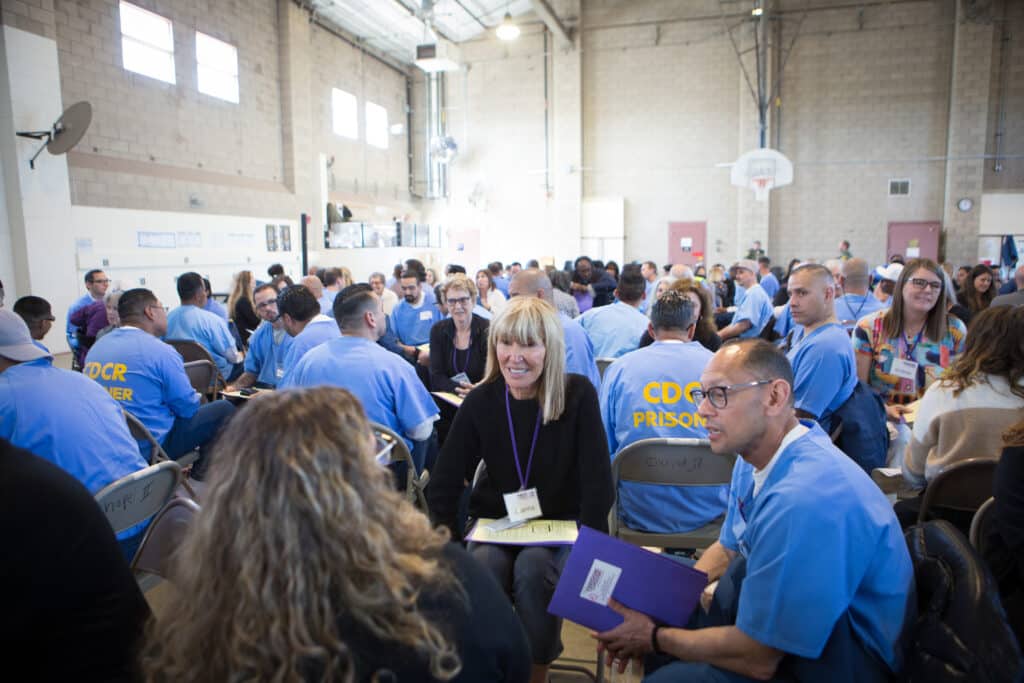
Volunteer Joanna Cottrell (center) participates in a Trio at a large workshop in the gymnasium of Valley State Prison. | Credit: David Sand
If You Know the Why, the How Follows
Working with incarcerated people was the last thing the Pauls would have chosen for themselves. They were more than happy with their lives together, living and working in Santa Barbara and commuting to Santa Monica on weekends to teach.
They had met each other five years earlier at a charity dinner dance. Bonnie, who grew up in Sunland, California, was a hypnotherapist considering a shift to psychology. David had been an ER doctor in Colorado before a head-on collision left him with permanent nerve damage in his left arm and hand. This made it impossible for him to continue practicing medicine, and he decided psychology was the next best thing. Then, on a road trip up the California coast, he fell hard for Santa Barbara’s beaches, mountains, and convivial vibe. When he met Bonnie, it turned out she had always wanted to live here too.
In early 2004, both were teaching psychology, and with Leland’s letter in hand, the couple decided that a one-time workshop at Valley State would be a good opportunity for their graduate students to meet USM’s community-service requirement. It would be win-win.
The only question left was how to teach it.
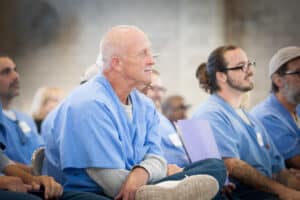
Credit: David Sand
In the Blink of an Eye

Two women incarcerated at Valley State Prison for Women embrace at the end of a workshop. | Credit: David Sand
Growing up in Northern California, Leland moved from small town to small town. Her attendance at school had been sporadic. Usually, her parents needed to relocate for work, and then off to another school district she went. The only photos she has of herself as a child are her 4th- and 5th-grade class pictures when her family managed to stay in Hayford for two years. At age 15, she dropped out of school altogether and had a baby. Three more babies came by the time she was 18. Her sense of belonging came in the company of friends who, like her, didn’t finish school and leaned on substances to make it through.
She takes responsibility for her mistakes, especially the one that landed her in Valley State. That was when she got into an old friend’s truck that, unbeknownst to her, had been stolen. It didn’t take long for police to signal them to pull over. But the driver, who had a prison record, wasn’t going to risk another arrest. In the blink of an eye, she was in a car chase.
“In that moment, I was like, ‘Well, I guess we’re running from the police,’ ” Leland remembers. “You just make a decision and … don’t go against the grain. Those are your people. They’re like family.”
During the chase, Leland’s friend fired shots back at the cops, and she reloaded the gun for him.
Fortunately, no one was injured, and the truck eventually got stuck in the mud. The driver took off on foot. Leland was arrested and charged with attempted murder of police officers. She was sentenced to life plus 36 years.
Small Groups of Three
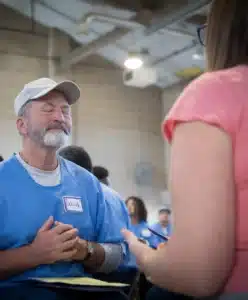
Credit: David Sand
The Pauls decided to stretch the workshop across a weekend and have their students sit with inmates in small groups of three, also known as Trios. Here, students would model communication and emotional skills and give inmates the chance to try them out. Both David and Bonnie had used the Trio system with their psychology students and knew it worked well to teach emotional and relationship skills.
They also included the work of Dr. Viktor Frankl, late Austrian psychiatrist and Nazi concentration camp survivor. His observations of how people survived and didn’t survive the brutality of Auschwitz could be a lifeline for incarcerated men and women, the Pauls thought. Frankel’s quote that “between stimulus and response, there is a space. In that space is our power to choose our response. In our response lies our growth and our freedom” is evoked frequently in the workshops. And when they incorporated the program into a nonprofit, they named it after Frankl’s work: Freedom to Choose.
And so, in March 2004, with boxes of handouts and mountains of goodwill, David, Bonnie, and 25 USM students, plus a few other volunteers, set out for Chowchilla, in the heart of Central Valley, to help a gymnasium full of incarcerated women cultivate a little self-worth.
A Rearrangement of Stars
Meanwhile, Leland had been working hard to ensure there would be a decent turnout. For weeks, she’d carried a clipboard around with her, urging women to sign up. In the end, she got 57 of them to attend, including the facility’s toughest, most notorious shot-caller.
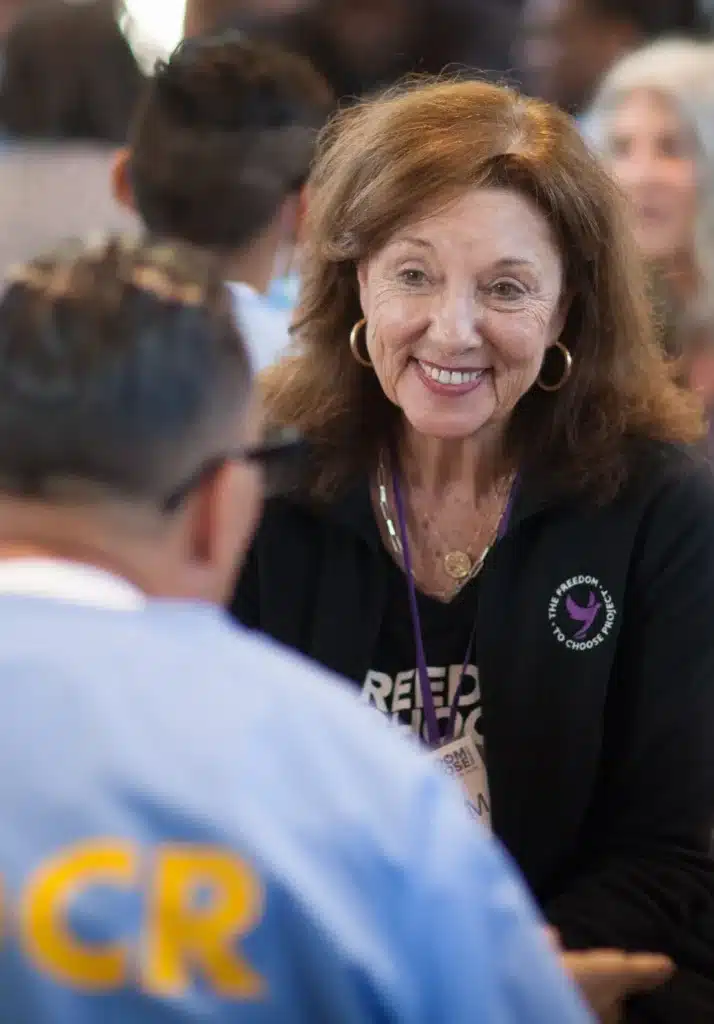
Freedom to Choose volunteer Jo Ann Mermis listens as an incarcerated man shares. | Credit: David Sand
But when the Pauls finally arrived with their team that first Saturday morning, Leland was actually shocked to see them standing there. In her world, people never showed up for you. Yet here they were, smiling and genuinely happy to see every one of them.
After settling into their seats, David Paul started things off. It went something like this: No one can make anyone feel a certain way. Our feelings are our own responsibility.
“No one can make me angry. That’s impossible,” David Paul said in a later interview. “No one can make anybody angry. Someone can do something. If it hits a hurt, it will trigger fight, flight, freeze response. I might respond with anger, but that’s on me.”
It seems counterintuitive, and yet, learning that we alone are responsible for our feelings and how we choose to respond and cope with them, is a core skill that Freedom to Choose teaches and coaches in their Trios.
For Leland, it was a cosmic realignment.
“I said, ‘What do you mean I’m responsible [for my feelings]? But I’m a victim of my circumstances. I’m a victim of poverty.’ I had a mountain of reasons why I was a victim.”
After arranging the chairs into groups of three, each little cluster was set up to be a mini interpersonal learning lab. One chair was for a facilitator, another for a sharer, and a third for a neutral observer. Everyone had been given a list of open-ended questions designed to tap into life experiences and feelings. For example: In one Trio round, participants are asked to create a brief timeline of significant events in their lives, and then to choose one event to work with.
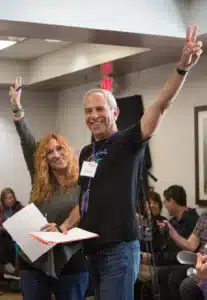
Freedom to Choose program coordinator Susan Sizer and Director of Training Wayne Pepper wave the peace sign at a volunteer training.
The person in the facilitator chair will ask a series of prescribed questions, such as, “As you reflect on this experience, are you aware of any judgements you made about yourself or anyone else that you would like to release?” The sharer then answers the questions, and the neutral observer watches. Over the course of the Trio, participants rotate until each one has had a turn in each chair.
The Freedom to Choose curricula, developed and refined over 20 years, reads like an inventory of things we could all probably be a little better at: active listening, responsibility and accountability, empathy, releasing judgements of oneself and others, and forgiveness of self and others. Suffice it to say, it’s long.
That first weekend, Leland landed in a Trio with a graduate student named Ray Hutcherson. The skill for that Trio was releasing judgments of self and others. When Leland was the sharer, Ray, who was the facilitator, asked her to recall an upsetting event. She didn’t have to think hard — it would be her stepfather’s name-calling and physical abuse.
“It wasn’t so much about what he was doing to me because I judged myself, like I wasn’t worthy of love or being treated with kindness or anything like that,” Leland said. “And [then] Ray said, ‘You are valuable. And the proof of that is you’re here. You’re living, and so you’re worthy of being treated with love and kindness.’ ”
Over time, and with practice, Leland began to question long-held assumptions.
“What if I am responsible?” she thought. “And what if none of that stuff defines who I am and who I’m not — you know, the abused kid who was told she was stupid and worthless her whole life. What if I do matter?”
Over time, and with practice, Leland began to question long-held assumptions.
“What if I am responsible?” she thought. “And what if none of that stuff defines who I am and who I’m not — you know, the abused kid who was told she was stupid and worthless her whole life. What if I do matter?”
New Ways of Thinking: Mirror Neurons
For those who think this is just New Age hooey, there is solid neuroscience that supports the teaching of social-emotional skills through modeling. It started 20 years ago with monkeys in Italy. That’s when scientists discovered that the part of a monkey’s brain that lights up when it does something — like picking up a piece of orange — also lights up in the brain of a monkey who is simply watching the other monkey pick up the orange. The lighting-up occurs in mirror neurons, which humans have too. And the scientists found that human mirror neurons activate in the same mirror-like way as the monkeys’ mirror neurons do.
With further research, scientists found that it’s not only true for motor movements, but also for emotions such as anger, and for intentions, David Paul explained. So, when the people sitting in the observer chair watch a participant who has been triggered by anger breathe through the emotion instead of lashing out, their own brains will activate as if they too were breathing through an emotion.
According to David Paul, as Trio participants practice the skills repeatedly in each workshop, they begin to internalize them. Not everyone is equally sensitive to the effects of mirroring, but everyone can learn the skills. “If I have a hurt inside and I practice the skills, and the hurt dissolves and is replaced by a sense of peace, that experience informs me about what the skill does,” he said.
“There’s no hierarchy [in this],” David Paul said. “We have a series of skills, very simple ones, and we all practice them as people. It’s totally a level playing field. What everyone realizes is that there’s an incredible amount of similarity. And you realize that if any one of us had been raised in those circumstances, odds are we’d have made the same choices.”
As the program wound down that Sunday afternoon, the women wanted to know when the group would be coming back. Bonnie and David ultimately concluded that the women’s eagerness to learn outweighed everything. So back they went six months later and six months after that. Meanwhile, the women were taking the printed skill sheets back to their cells and practicing them with each other.
Leland became known as the Freedom to Choose girl.
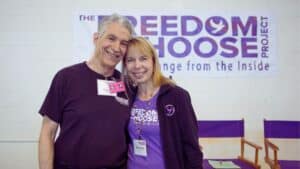
David and Bonnie | Credit: David Sand
Bringing the Work Home
In 2009, Bonnie and David were invited by the Santa Barbara Rotary Club to speak about their work. That led to a presentation before the Santa Barbara Reentry committee. One of the Sheriff’s officers, Mark Mahurin, was so impressed, he wanted to bring the program to the Santa Barbara County Jail.
Shortly thereafter, the program received funding from the Bower Foundation and the Santa Barbara Foundation for a pilot program with formerly incarcerated individuals, Sheriff’s officers, parole officers, substance abuse counselors, and community volunteers.
In 2012, Valley State Prison for Women began the process of switching to all male inmates. The Pauls assumed that would be the end of their work there. Then the warden called them into his office.
“We were like, ‘Oh my God.’ And he spends an hour literally convincing us to stay on at the prison and work with the men,” Bonnie recalled. “But I was very scared to work with men in prison,” she said.
“We’d heard the stories, and so we took all the emotional words out of our handouts,” David Paul said. “We took ‘love’ out … and we’re only going to work with a select group of men, with 75 men. So, we go into the workshop and we’re presenting this material, and at the first break, this one guy comes up to me, and he’s a big guy. He’s got some scars and he’s got a bunch of tattoos. He walks up to me, and with a stern look on his face, he goes, ‘This is about love, isn’t it?’ And I go ‘Actually, yes.’ And he goes ‘That’s good.’ And he walks off.”
After the second workshop, the men also began asking for more opportunities to practice. Six months was too long to wait, they said. So they formed their own group, the Inmate-Led Leisure Activity Group, or ILTAG, and began meeting every two weeks for two hours. The classes got so big, they had to spin off into two groups. “They progressed to the point where we had three years of curriculum for them to learn,” David Paul said.
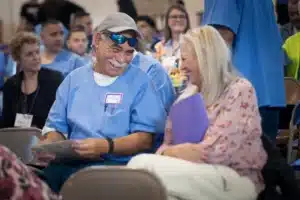
Credit: David Sand
Writing It All Down
As inmates were moved between facilities — as they are in the correctional system — word spread. Requests from other prisons started coming in. California Department of Corrections and Rehabilitation (CDCR) had started providing funding, allowing Freedom to Choose to expand to places like Folsom State, Central Valley Women’s Facility, and the California Men’s Colony in San Luis Obispo. By 2019, Freedom to Choose was holding biannual workshops of 200 or more inmates in five California prisons.
When COVID-19 closed the prisons to outside visitors, Bonnie and David created a correspondence course. Without the benefit of the modeling, it seemed unlikely to work. But a year-long course based on answering the same questions posed in the Trios in thoughtful long-form essays grew into a new mode of connecting around the same skills.
“Each [correspondence] lesson is teaching a skill,” said Bonnie. “Trained volunteer readers respond with deepening follow-up questions, like, ‘Have you thought of it this way?’ And, ‘Wow, great job.’ ” Many of the written responses reflect on interactions with family and fellow inmates, as well as prison staff.
That correspondence course is now being offered in Santa Barbara’s South County Jail, as well as 32 state prisons.
No one from CDCR would comment on the program’s effectiveness or popularity, but they did confirm the group’s presence at their facilities. Today, 60 percent of the program’s budget comes from CDCR grants, the remainder from small grants and private donations. Bonnie and David have never taken a salary.
Since 2004, Freedom to Choose workshops have served 6,965 inmates in 218,700 hours of in-person training. Large studies on recidivism are hard to accomplish due to privacy laws, but in a longitudinal quality of life survey, of 2,112 women who had participated in FTC workshops, 98 percent of respondents reported that their lives had improved, and 91 percent said they were experiencing less conflict.

In March, Freedom to Choose volunteers and founders held their first large, in-person workshop since the pandemic at Valley State Prison. The weekend also marked the 20th anniversary of the group’s founding. Rhonda Levine is seated in the front row, fourth from the far left. Bonnie and David Paul, also in front, are fifth and sixth from the far right. To learn more about Freedom to Choose, or to volunteer, go to freedomtochooseproject.org. | Credit: David Sand
Free at Last
Leland’s original sentence set her first shot at a parole hearing for 2036. But under a 2021 expansion of Proposition 57, inmates older than 50 who had served 20 years were suddenly allowed a chance at getting out.
It happened so quickly that she didn’t have time to prepare. “I credit all the work I did with Freedom to Choose, because my board hearing was very short. It was like one of the shortest ones that have happened, and they found me suitable.”
She was released in March 2023.
Normally, someone convicted of attempted murder of police officers would have to serve six months in a halfway house. Corrections officials expected Leland to be trouble. She surprised them.
“It was my work ethic, and my ability to meet my appointments. I didn’t think that anything was owed to me. I felt like I owed.”
Today, she is living outside Redding in a house surrounded by farms and meadows. She works full-time for Freedom to Choose as a remote Education Assistant, making $25 an hour. And already, she’s returned to Valley State to help run workshops.
During the breaks, men sometimes come up to her with tears in their eyes, saying how much they related to her story.
“A lot of times, people think that just because I wrote the letter that got this all started, [that] I had all this support.” Leland said. “But I didn’t. I had to do it alone. And when I tell the men that, they’re like, ‘You did?’ I tell them, ‘Yeah, you still have to do the hard stuff. You have to face it and tell your truth.’ I think that gives them hope. That they don’t need anybody to fix their life for them. They can do it all on their own. It’s a lot of hard work, but they’re worth it. They gotta believe they’re worth it.”

Credit: David Sand
